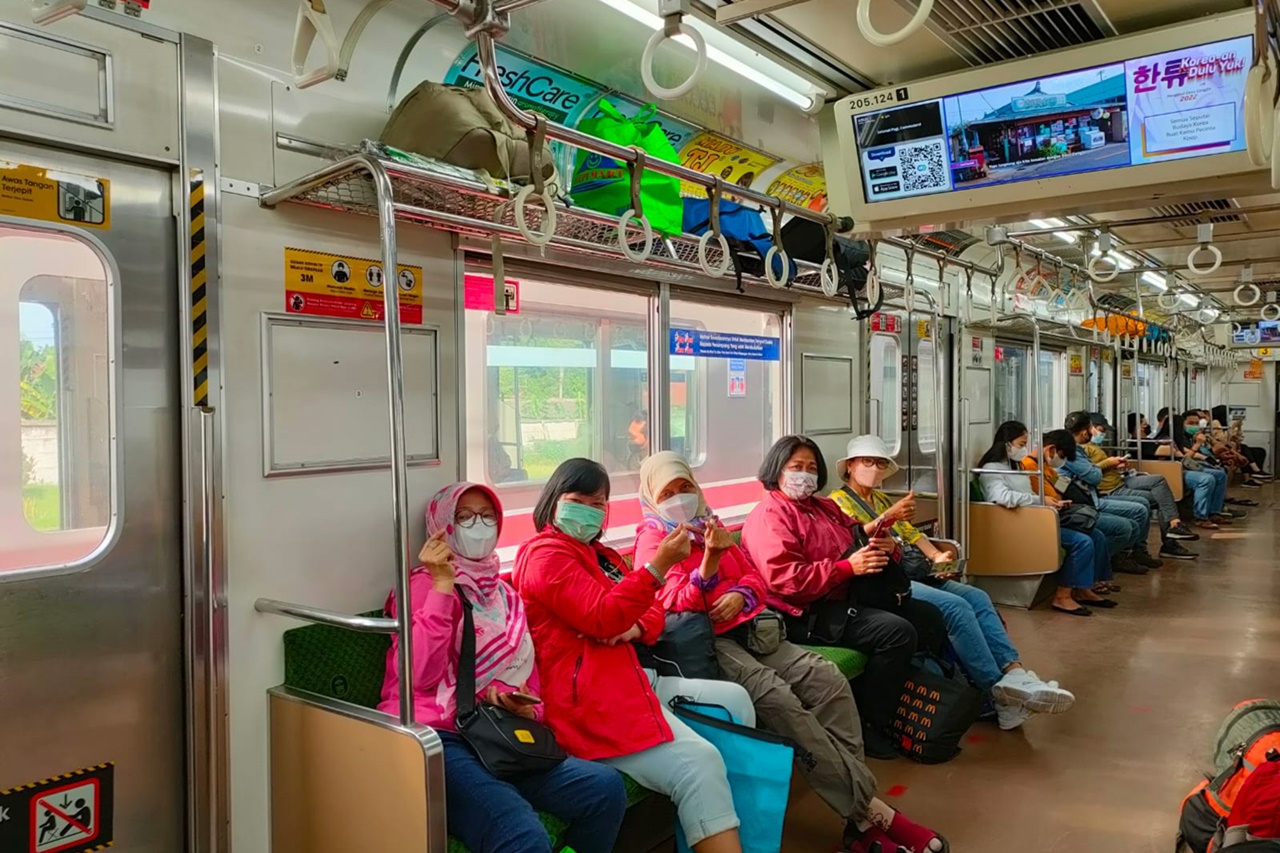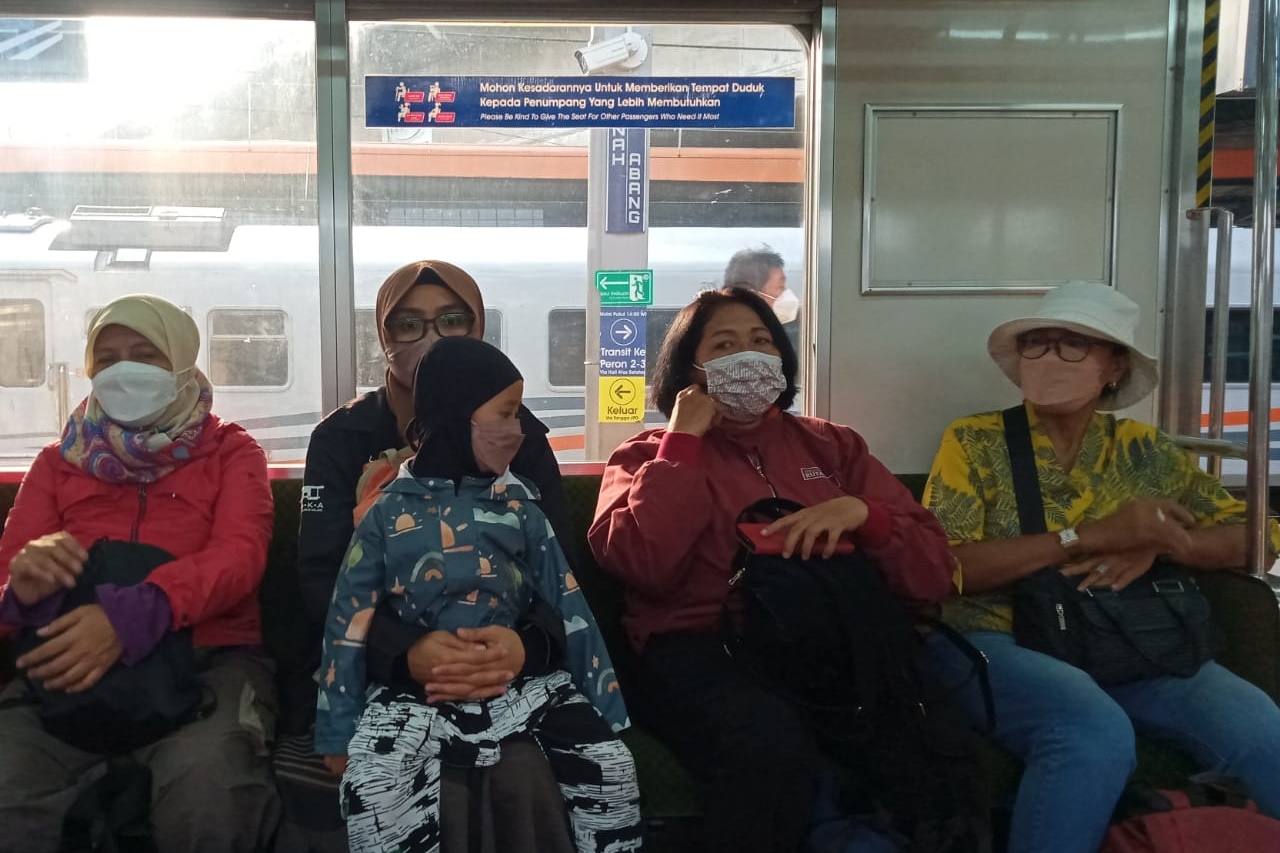Bekasi (May 28,
2022) - The elderly are
one of the vulnerable groups and rarely go unnoticed. Both from society and the
state. They are often a second-rate group and not a priority. Even though the
elderly are faced with various problems, from physical, and psychological, to
economic. Not a few of them still have to work hard, who suffer from illness,
to those who experience violence.
One form of lack
of attention to the elderly is public transportation that has not been or is
not friendly to them both in terms of facilities and the environment that does
not have sensitivity to their existence. The need for friendly public
transportation is of course because not all of them just stay at home, relying
on their children and grandchildren. Many of them still have to work, stay
productive, go out on their own, and use public transportation.
The elderly
themselves as stated in the Minister of Social Affairs Regulation Number 4 of
2017 on Guidelines for the Development of Elderly Friendly Areas, are those
aged 60 years and over. It is almost 10 percent of the total population in Indonesia.
Through this regulation, the elderly are entitled to an area that is friendly
to them. This includes hospitality; safe and accessible transportation and
special transportation services.
In practice, not
all public transportation is easily accessible or provides special
services for the elderly or disabled. Whereas based on a report from The
Prakarsa in 2020, as many as 69 percent of the elderly are people with
disabilities. Has physical, mental, cognitive, and sensory limitations.
In some places,
public transportation facilities sometimes still burden them. In some bus
terminals, for example, many accesses require them to walk long distances, up
or down stairs, in long queues, to scramble for seats with other passengers. In
contrast, the train station has begun to make adjustments to the needs of the elderly
and disabled by providing facilities and infrastructure that allow the elderly
to still be able to travel safely and comfortably.
In villages, where
public transport is usually the main choice, they also often receive less
attention. For the elderly who are still working in the fields or gardens, some
have to bring their garden produce or equipment. Here, not all drivers are
willing to help carry their goods. Luckily, this elderly finds a passenger who
is willing to help.
The highest poverty rate in Indonesia is also experienced by the elderly. In addition to decreased productivity due to weak physical conditions, many jobs do not guarantee their old age. While the health need is increasing, productivity and income have decreased drastically. Many of them end up relying on the daily needs of their children or grandchildren.
Until now, the state is still trying to be there for them. Presidential Regulation Number 88 of 2001 is one example. This regulation contains the national strategy for sustainability. This regulation is also the president's mandate to the relevant ministries or agencies to deliver programs that protect and empower them.
Among these programs are Elderly Assistance (ASLUT), Family Hope Program (PKH), Elderly Assistance (BANTU-LU), Rice for the Poor (RASTRA), and Non-Cash Food Assistance (BPNT), to BPJS Health. All of these programs are part of the government's concern for the welfare of the elderly.
Through MoSA, the state also pays attention to single elderly who live in uninhabitable places through a home renovation program for them. In addition to the assistance from the above programs which tend to be in the form of direct assistance, of course, other programs that are more sustainable are needed so that the elderly are more independent and empowered.
The form of state attention to the elderly must also be implemented in the daily environment, such as friendly transportation, affordable health costs, and a clean, healthy, and safe environment. This of course demands supervision, attention, and assistance from all of us so that the various aids provided by the state arrive and can be felt the benefits.
 Bahasa
Bahasa
 English
English



